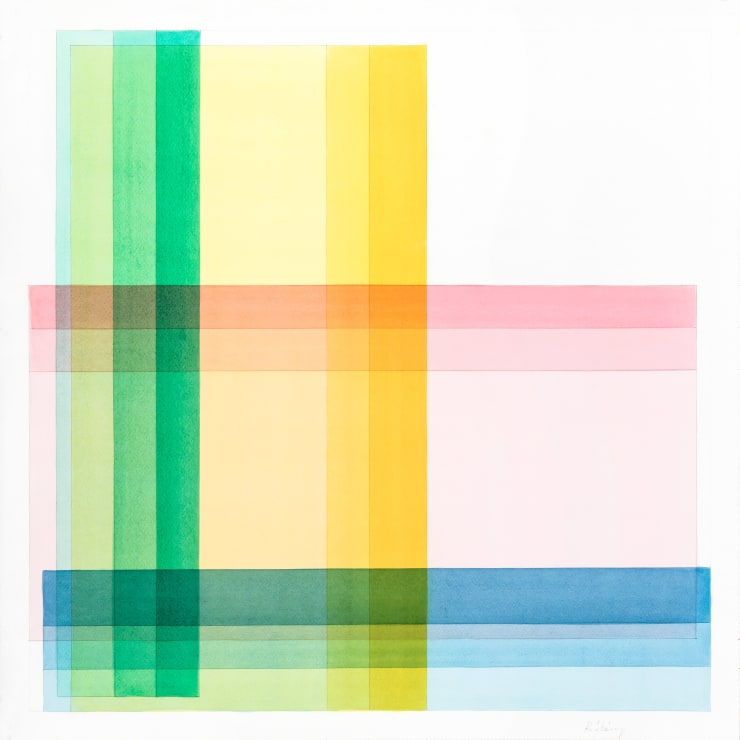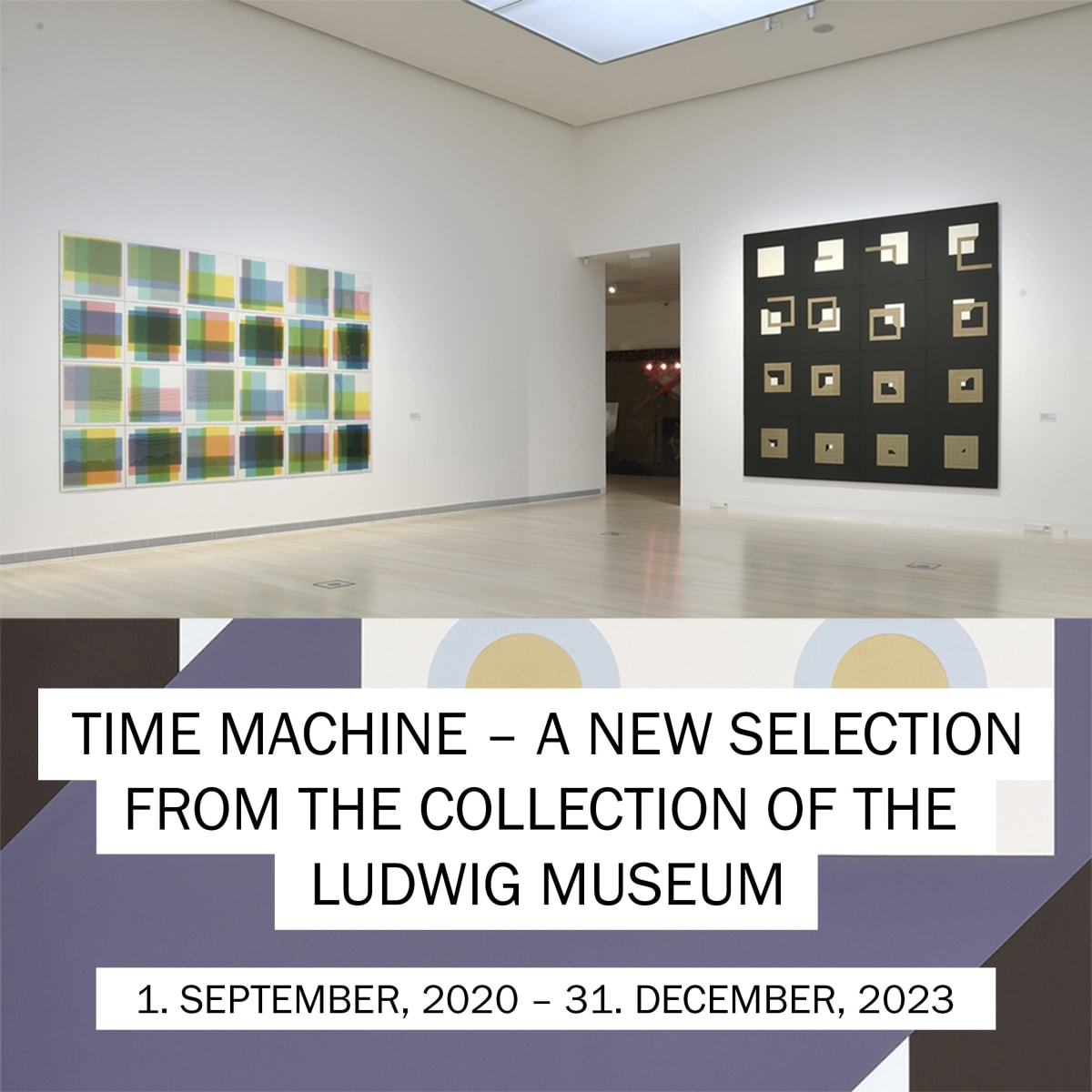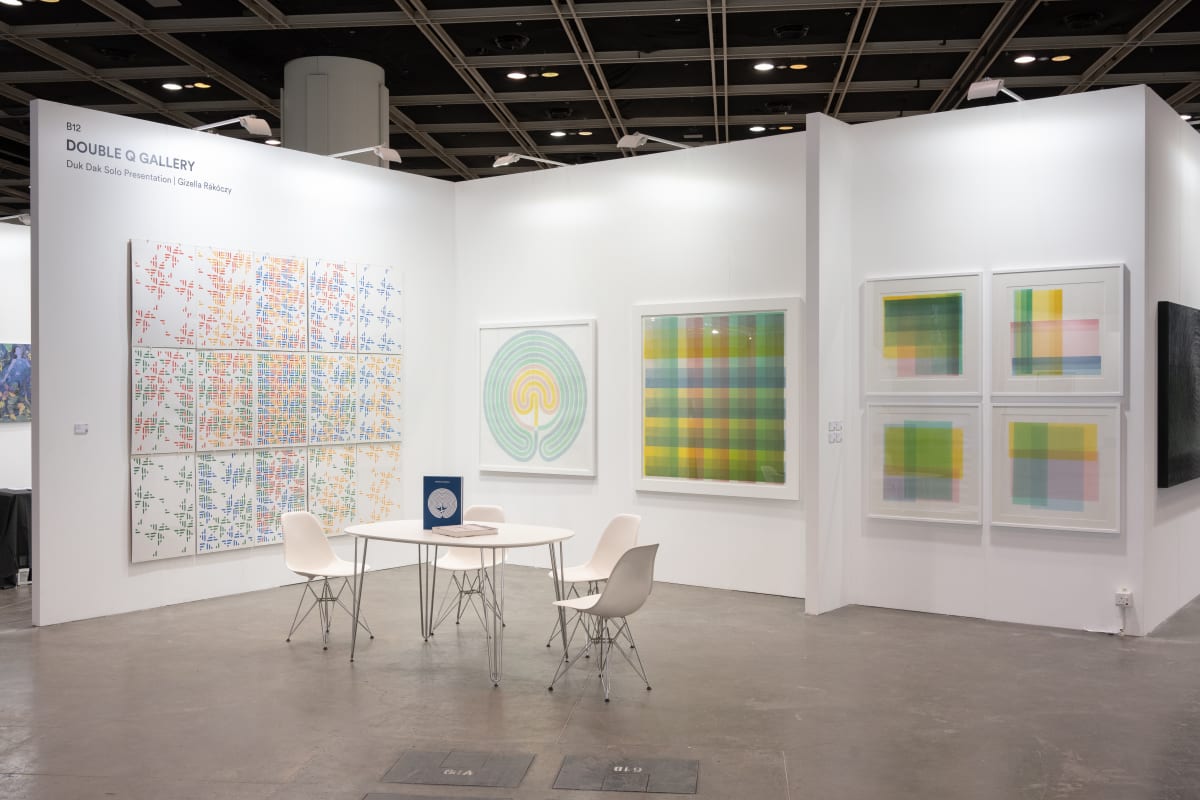Gizella Rákóczy
A central figure in Hungarian and international geometric art, Gizella Rákóczy’s art are deduced by mathematical laws, which lead to an outcome of speculative knowledge exuding the charm of rational aesthetic. The analytical, minutely detailed character of her works – which always operate in terms of structures and series – can be linked to the paintings of Richard Paul Lohse and Agnes Martin.
After briefly exploring multiple mediums, Rákóczy started to study four-armed spirals and related mathematical laws in 1976 prompted by a Scottish tomb carving. She used the spirals as her starting point for a system that could be transferred onto the canvas and later reflected the mathematical relationships of this system on her tempera on paper and screen-printing works for two decades. “In my assessment, the world of spirals is a system of symbols that functions according to universal laws...” Rákóczy says. After 1998, she replaced tempera with aquarelle paint and the four-armed spirals with the Fibonacci sequence. As a result of the recursive nature of the mathematical sequence, many of her paintings completed after 1999 bear as many as 168 layers of translucent aquarelle paint. Through experimentation, the artist developed a technique that, despite the excessive layering, still yielded homogeneous, brilliantly translucent colours while the mathematical laws governing the overlapping colour arrangements invariably resulted in grid structures.
Born in Budapest, Hungary in 1947, Rákóczy lived and worked there until her unexpected death in 2015 and left the last Cretan Labyrinth series unfinished. The recipient of many distinctions, she is remembered as one of Hungary’s foremost creators of geometric art. Her works have been collected in many institutions and art collections in Europe, including Hungarian National Gallery, Rómer Flóris Museum, Collegium Hungaricum, Arithmeum, Szabolcsi Bence Music School, Bartók Béla Music School and Ludwig Museum.




